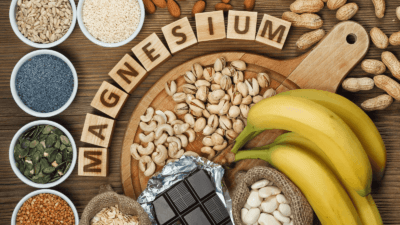Diabetes is a chronic metabolic disorder that affects how the body processes glucose, leading to elevated blood sugar levels. The two main types of diabetes are Type 1, which is often diagnosed in childhood and results from the body’s inability to produce insulin, and Type 2, which typically develops in adulthood and is frequently linked to lifestyle factors, including obesity and physical inactivity. Proper management of diabetes is crucial, as uncontrolled blood sugar can lead to serious health complications, affecting organs such as the heart, kidneys, and eyes.
Nutrition plays a vital role in managing diabetes, as the foods consumed can significantly impact blood glucose levels. Incorporating nutritional foods into a diabetes-friendly diet is essential for stabilizing these levels and promoting overall health. Foods rich in fiber, lean proteins, healthy fats, and vitamins should be prioritized, while those high in refined sugars and saturated fats should be limited. For example, whole grains, fruits, and vegetables can help maintain a healthy weight and improve the body’s insulin sensitivity, thus aiding in blood sugar control.
Specific nutrients also have a substantial influence on glucose levels. For instance, foods high in omega-3 fatty acids, such as fatty fish and flaxseeds, can help reduce inflammation and may improve insulin resistance. Additionally, antioxidants found in colorful fruits and vegetables can protect cells from damage, potentially decreasing the risk of diabetes-related complications. Following general dietary guidelines, individuals with diabetes should aim for balanced meals that include a variety of food groups, monitoring carbohydrate intake carefully to prevent spikes in blood sugar levels.
In conclusion, understanding the interplay between diabetes and nutrition is vital for effective management of the condition. A well-rounded diet consisting of nutritious foods tailored to individual needs can significantly contribute to better health outcomes for those living with diabetes.
Top 10 Foods That Lower Blood Sugar
Managing blood sugar levels is crucial for individuals with diabetes or those at risk. Nutritional choices play a significant role in blood sugar control, and certain foods can significantly help. Here are ten foods that are particularly beneficial for lowering blood sugar levels.
1. Leafy Greens:
Leafy greens, such as spinach, kale, Swiss chard, and collard greens, are among the most nutrient-dense foods available. These vegetables are low in carbohydrates and calories, making them an excellent choice for maintaining healthy blood sugar levels. Their high fiber content further aids in regulating glucose levels by slowing the absorption of sugar, preventing rapid spikes in blood sugar.
In addition to their low glycemic index, leafy greens are packed with essential vitamins and minerals, including vitamins A, C, K, and folate, as well as potassium and magnesium. These nutrients not only support overall health but also contribute to heart health, bone strength, and immune function. The antioxidants found in leafy greens, such as beta-carotene and flavonoids, help reduce oxidative stress and inflammation, which can improve insulin sensitivity and reduce the risk of developing chronic diseases like type 2 diabetes.
Leafy greens are also rich in chlorophyll, which has been shown to have potential benefits in detoxifying the body and reducing inflammation. Their versatility makes them easy to incorporate into a variety of meals, from salads and smoothies to soups, stews, and stir-fries.

2. Whole Grains:
Whole grains, such as brown rice, quinoa, oats, barley, and whole wheat, are excellent sources of complex carbohydrates, fiber, vitamins, and minerals, making them a healthy choice for managing blood sugar levels. Unlike refined grains, which are stripped of many essential nutrients and have a higher glycemic index, whole grains retain their bran and germ, providing a slower, more gradual release of glucose into the bloodstream. This helps prevent blood sugar spikes and supports more stable glucose levels throughout the day.
The high fiber content in whole grains plays a key role in regulating blood sugar by slowing the absorption of sugar. Fiber also promotes feelings of fullness, aids in digestion, and helps maintain a healthy weight, which is crucial for managing type 2 diabetes. In addition to fiber, whole grains are rich in essential nutrients such as B vitamins, iron, magnesium, and antioxidants, all of which contribute to overall health.
Incorporating whole grains into your diet can be as simple as swapping refined grain products for whole grain alternatives. For example, choosing whole wheat bread over white bread, or opting for brown rice instead of white rice, can significantly improve your nutrient intake while helping to stabilize blood sugar levels. Whole grains can be enjoyed in a variety of dishes, from breakfast oats and grain bowls to soups, salads, and side dishes, making them a versatile and nutritious option for supporting blood sugar control.
3. Legumes:
Beans, lentils, and chickpeas are excellent sources of plant-based protein and fiber, making them fantastic additions to a blood sugar-friendly diet. These legumes are known for their low glycemic index (GI), which means they have a minimal impact on blood sugar levels. Unlike high-GI foods that cause rapid spikes in blood glucose, the complex carbohydrates in beans, lentils, and chickpeas are digested more slowly, providing sustained energy and helping to maintain steady glucose levels throughout the day.
The high fiber content in these legumes plays a significant role in regulating blood sugar. Fiber slows the absorption of sugar into the bloodstream, which helps to prevent sudden blood sugar spikes. It also promotes satiety, helping control appetite and reducing the likelihood of overeating, which can contribute to better weight management and improved blood sugar control.
Additionally, beans, lentils, and chickpeas are rich in essential nutrients like vitamins, minerals, and antioxidants, all of which contribute to overall health. Regular consumption of these legumes can help support digestive health, improve heart health by lowering cholesterol levels, and reduce the risk of chronic diseases such as diabetes and heart disease.
4. Berries:
Berries, including blueberries, strawberries, and raspberries, are not only delicious but also packed with essential nutrients, antioxidants, and vitamins that contribute to overall health. Their low glycemic index (GI) makes them an excellent choice for individuals looking to manage their blood sugar levels, as they have a minimal impact on glucose levels. This means they are less likely to cause rapid spikes in blood sugar compared to higher-GI foods.
The antioxidants found in berries, such as flavonoids and anthocyanins, have powerful anti-inflammatory and cell-protective properties, which help to reduce oxidative stress and improve cardiovascular health. These antioxidants also support the immune system and contribute to better cognitive function.
In addition to their antioxidant content, berries are high in fiber, which plays a crucial role in stabilizing blood sugar. The fiber helps slow down the absorption of sugar into the bloodstream, promoting more stable glucose levels. It also aids digestion and promotes feelings of fullness, making berries a great snack option for weight management.

5. Nuts:
Almonds, walnuts, and pistachios are nutrient-dense snacks that offer a rich combination of healthy fats, protein, and fiber, making them an excellent choice for improving overall health and supporting blood sugar control. These nuts are packed with monounsaturated and polyunsaturated fats, which are beneficial for heart health and can help improve insulin sensitivity. By enhancing the body’s response to insulin, nuts play a key role in managing blood sugar levels and preventing insulin resistance, which is crucial for those with or at risk for type 2 diabetes.
In addition to their healthy fats, these nuts are high in protein and fiber, both of which help regulate appetite, promote feelings of fullness, and stabilize blood sugar levels. The fiber content also supports healthy digestion and may reduce the risk of gastrointestinal issues. Furthermore, nuts like walnuts are rich in omega-3 fatty acids, which have anti-inflammatory effects that can further enhance insulin sensitivity and overall metabolic health.
Including a handful of almonds, walnuts, or pistachios as part of a balanced diet can provide a satisfying and nutritious snack, while also offering benefits for blood sugar management. To maximize these health benefits, it’s best to choose unsweetened, unprocessed nuts, as added sugars or excessive salt can counteract their positive effects.
6. Fatty Fish:
Fatty fish, such as salmon, mackerel, and sardines, are excellent sources of omega-3 fatty acids, which are known for their powerful anti-inflammatory properties. Omega-3s, particularly EPA and DHA, play a crucial role in reducing inflammation throughout the body, including in the blood vessels and tissues. Chronic inflammation is often linked to insulin resistance, a key factor in the development of type 2 diabetes, so reducing inflammation can help improve insulin sensitivity.
Regular intake of these fatty fish can offer significant benefits for overall heart health. Omega-3 fatty acids help lower triglyceride levels, reduce blood pressure, and improve cholesterol balance, all of which contribute to a healthier cardiovascular system. Moreover, by improving insulin sensitivity, omega-3s can help stabilize blood sugar levels and reduce the risk of developing diabetes.
Incorporating fatty fish into your diet a few times a week can be a delicious and effective way to promote heart health, reduce inflammation, and support better glucose metabolism. Whether grilled, baked, or added to salads and stews, these fish are versatile and nutritious options for maintaining overall health.
7. Sweet Potatoes:
Sweet potatoes are a low glycemic index (GI) alternative to white potatoes, making them a better option for managing blood sugar levels. Due to their lower GI, sweet potatoes cause a slower and more gradual rise in blood sugar, helping to prevent spikes and crashes. They are also rich in fiber, which further aids in stabilizing blood sugar by slowing the absorption of sugar into the bloodstream.
In addition to fiber, sweet potatoes are packed with essential vitamins and minerals, such as vitamin A (in the form of beta-carotene), vitamin C, and potassium, all of which contribute to overall health and well-being. The high fiber content also promotes feelings of fullness, making sweet potatoes a satisfying addition to meals, which can aid in weight management and prevent overeating.
Whether baked, mashed, or roasted, sweet potatoes provide a delicious, nutritious option for those looking to maintain stable blood sugar levels while enjoying a tasty, versatile dish.
9 Symptoms of Diabetes You Should Never Ignore
8. Greek Yogurt:
Greek yogurt is rich in protein and probiotics, making it a powerful food for promoting gut health and improving glucose metabolism. The high protein content in Greek yogurt helps regulate appetite by promoting feelings of fullness, which can aid in weight management—a key factor in managing blood sugar levels. The probiotics, or beneficial bacteria, found in Greek yogurt support a healthy gut microbiome, which plays a crucial role in digestion and overall metabolic function, including glucose regulation.
Probiotics may help enhance insulin sensitivity, reduce inflammation, and improve the body’s ability to process glucose, making Greek yogurt an ideal choice for those looking to manage their blood sugar levels. However, for optimal blood sugar control, it’s essential to choose unsweetened varieties of Greek yogurt, as added sugars can cause spikes in blood sugar. Opting for plain, unsweetened Greek yogurt allows you to reap the health benefits without the added sugars that may counteract its positive effects on glucose metabolism.
Greek yogurt can be enjoyed on its own or paired with healthy toppings like nuts, seeds, or fresh fruit for a balanced snack or breakfast. Its versatility and health benefits make it a valuable addition to a blood sugar-friendly diet.
9. Avocado:
Avocado is a highly nutritious fruit that stands out due to its high content of healthy monounsaturated fats and its low carbohydrate profile, making it an excellent food choice for individuals managing blood sugar levels, especially those with type 2 diabetes. The healthy fats in avocados, particularly oleic acid, help improve insulin sensitivity and support better regulation of blood glucose. The low carbohydrate content prevents rapid spikes in blood sugar, making it a diabetic-friendly option.
In addition to its fats, avocado is rich in dietary fiber, which plays a significant role in promoting satiety, helping control appetite and reducing overall calorie intake. The fiber also aids in digestion, supporting a healthy gut by promoting regular bowel movements and preventing constipation.
Avocados are also packed with essential vitamins and minerals, including potassium, vitamin E, and B vitamins, which contribute to overall health. The fruit’s creamy texture and subtle flavor make it incredibly versatile in the kitchen. It can be used in both savory and sweet dishes, such as salads, sandwiches, guacamole, smoothies, and even as a substitute for butter or cream in baking.
10. Cinnamon:
Adding cinnamon to meals can help improve insulin sensitivity and lower blood sugar levels, making it a valuable addition for individuals managing type 2 diabetes. Cinnamon contains bioactive compounds, such as cinnamaldehyde, that may aid in regulating glucose metabolism and enhancing the body’s response to insulin.
This spice can be easily incorporated into various dishes, from baked goods like muffins and pancakes to savory meals like stews, curries, and roasted vegetables. It also pairs well with smoothies, oatmeal, and beverages like tea or coffee, offering both flavor and health benefits. With its versatility, cinnamon can be a tasty and natural way to support balanced blood sugar levels.
Meal Planning and Incorporating These Foods
Creating balanced meals that incorporate diabetes-friendly foods requires thoughtful planning and preparation. To effectively manage diabetes, meal planning should focus on integrating foods known for their beneficial effects on blood sugar levels. Key components include understanding appropriate portion sizes, choosing healthy cooking methods, and ensuring variety in your meals.
When preparing meals, consider batch cooking to save time during the week. This can involve cooking larger quantities of foods like grilled chicken, whole grains, or roasted vegetables that can be easily utilized in multiple meals. For breakfast, consider oatmeal topped with berries and nuts or a smoothie made from spinach, a low-glycemic fruit, and yogurt. These options are not only nutritious but can also help maintain stable blood sugar levels.
For lunch, whole grain wraps filled with lean proteins such as turkey or hummus with assorted vegetables provide a satisfying and diabetes-friendly choice. Salads featuring leafy greens and beans can also serve as a hearty meal, providing fiber and essential nutrients. Dinner can include baked salmon paired with quinoa and steamed broccoli, showcasing a variety of food groups while keeping carbohydrate intake in check.
Snacking can become an opportunity to embrace healthy choices as well. Nuts, seeds, and Greek yogurt serve as great snacks that can curb hunger while ensuring balanced nutrition. Fruit, like apple slices with almond butter or carrot sticks with hummus, can also be beneficial, combining taste and health effectively.
Introducing variety is crucial to maintaining a sustainable diabetic diet. Seasonal produce, new recipes, and experimenting with herbs and spices can keep your meals exciting. Additionally, setting realistic goals and preparing meals in advance can foster motivation and adherence to a diabetes-friendly eating pattern. Adopting these practices will not only support diabetes management but contribute to overall health and well-being.
Consulting Healthcare Professionals

When managing diabetes, it is crucial to consult healthcare professionals to ensure that any dietary changes made are both safe and effective. The collaborative approach between patients and healthcare providers, particularly dietitians and physicians, can lead to more successful management of diabetes through well-informed dietary choices. Engaging with these experts allows individuals to create personalized meal plans that align with their specific health needs, lifestyle, and medication regimens.
Healthcare professionals possess the necessary expertise to assess individual health parameters, including blood sugar levels, weight management, and any coexisting medical conditions. This thorough evaluation guides the development of a tailored approach to dietary changes. For instance, a dietitian can assist in selecting foods that not only help lower blood sugar but also support overall nutritional requirements. They can suggest appropriate portion sizes, meal timing, and strategies for balancing carbohydrates with proteins and fats.
Moreover, it is essential to understand how dietary adjustments interact with any medications prescribed for diabetes management. Physicians can provide insights on how nutritional changes may influence medication effectiveness, requiring potential adjustments in dosages or types of medications. This adaptability ensures that individuals maintain optimal control over their blood sugar levels while minimizing risks associated with hypoglycemia or other complications.
Furthermore, monitoring progress through regular consultations with healthcare professionals is vital. By keeping track of health parameters and adapting strategies as needed, individuals can foster a proactive approach to managing diabetes. Establishing a strong line of communication with dietitians and physicians not only reinforces the importance of nutrition in diabetes care but also supports overall health and well-being. Therefore, making dietary changes—done in conjunction with medical guidance—creates a comprehensive management plan tailored to individual needs.





